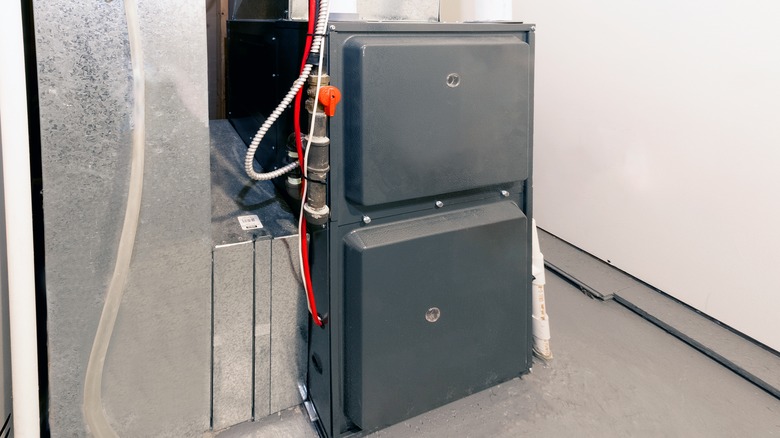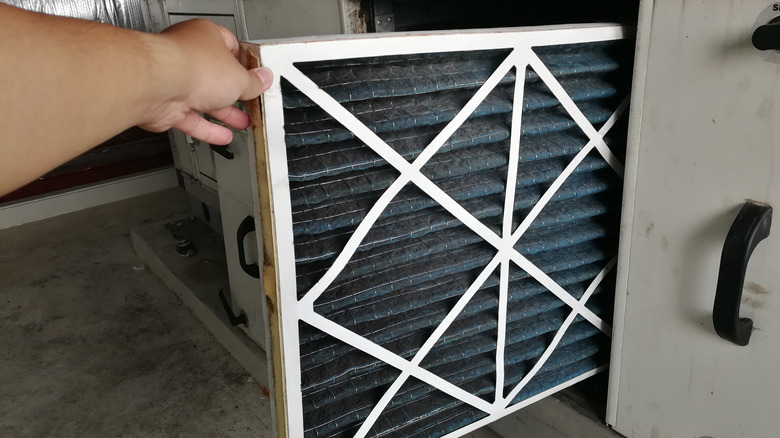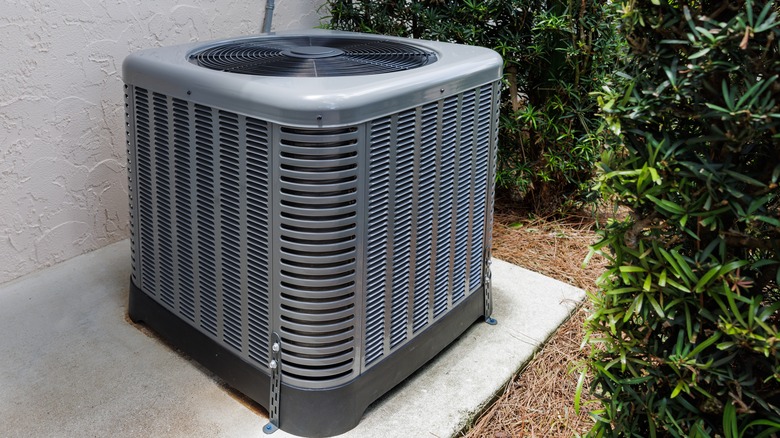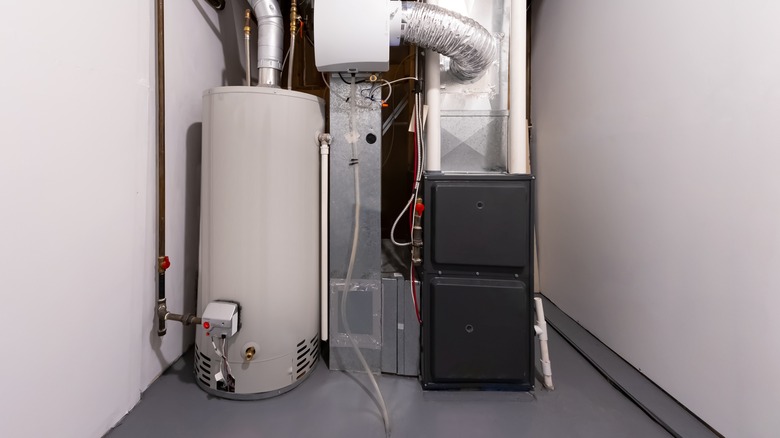The Right Way To Clean Your HVAC System On Your Own, According To An Expert – Exclusive
A home's heating and cooling system is what keeps it a comfortable place to live. Since this system operates in the background without much involvement after the thermostat has been set to the desired temperature, it can be easy to forget it's there. The HVAC system includes the heating, cooling, and ventilation mechanisms, and it requires careful attention and planned maintenance to keep it operating at an efficient level. When properly maintained, the system should last anywhere from 15 to 25 years or longer, according to Sealed.
While you could call a professional to do the work for you, with a bit of instruction and some helpful tips, you may be able to save money and do the preventative maintenance yourself. In an exclusive interview with House Digest, Chris Forbus, owner of Choice Air Care, provides insight into the correct way to clean an HVAC system. Let's take a close look at the steps involved.
Change the filter on time
There are a number of tasks needed to maintain an HVAC system, and this could differ between manufacturers. "There are only three areas of DIY cleaning we recommend for your HVAC system. The first is changing the filter regularly," says Forbus. The filter in an HVAC system helps to remove dirt and particles from the air coming into the heating and cooling system, reducing the risk of buildup within the components. Regularly cleaning and/or replacing them helps keep your overall system running smoothly.
According to Forbus, how often you do this depends on the size of the filter as well as the level of usage. He notes that it's best to check with the filter manufacturer to determine how frequently these types of replacements should occur; this will ensure it's done often enough to keep the system clean. Forbus also says, "This can be done by almost anyone, depending on the location of the filter. The next two areas [of maintenance] can be tackled by more adventuresome DIYers."
Clean the compressor and condenser
Now comes the outdoor unit. Forbus refers to this as "the compressor and condenser, or outdoor coil." Chances are good you'll know where this is outdoors because it tends to be a large box-shaped unit. Forbus states, "Make sure the area around the unit is free of leaves and other debris. You can use a shop vac, but be careful not to touch the coils. If you have a soft brush, you can use that to help loosen debris stuck on the outside of the coils. Don't use a stiff brush, the fins are easily damaged." Keeping an eye on this area helps ensure air can be pulled in easily by the air conditioner.
To complete this step, you'll need to make sure you shut off the power breaker, which should be right next to the unit. Forbus says, "Next, unscrew the top grating and lift the fan off the top. Then gently hose off the coils/fins, rinsing from the inside out. Never use a power washer." Keeping this area clean is an important task, especially if debris builds up around it often.
Maintain the drain pan
The third area for DIYer to take care of is the drain pain. "It should be mostly dry, as water should be easily draining down the drain tube," states Forbus. The drain pan is typically located under the HVAC system in your home. If you're not sure where it is, check the manufacturer's website to get a breakdown of the model. Forbus recommends cleaning this drain pan and drain by pouring a 50/50 mixture of water and bleach down the drain when changing the filter, noting, "This will help keep mold and algae from building up. However, if there is water sitting in the pan, it means the drain is at least partially clogged and should be cleared by a professional."
Forbus warns that there are times when it's best to call a professional who is trained to do certain things according to the manufacturer's recommendations. "The indoor coil, or evaporator, should be cleaned by a pro, as well as having the furnace serviced. Your tech can clean the flame sensor and check the heat exchanger for cracks."



